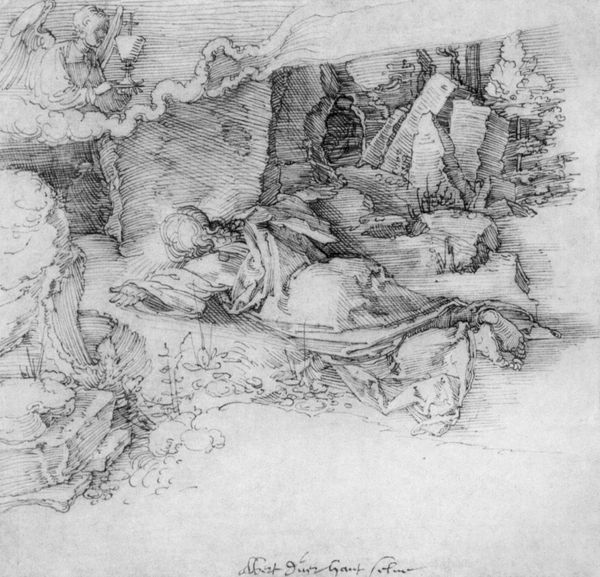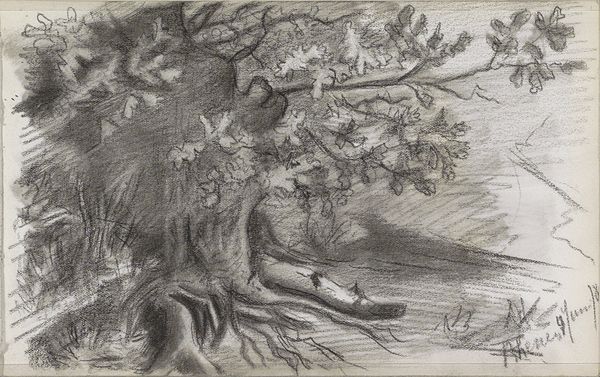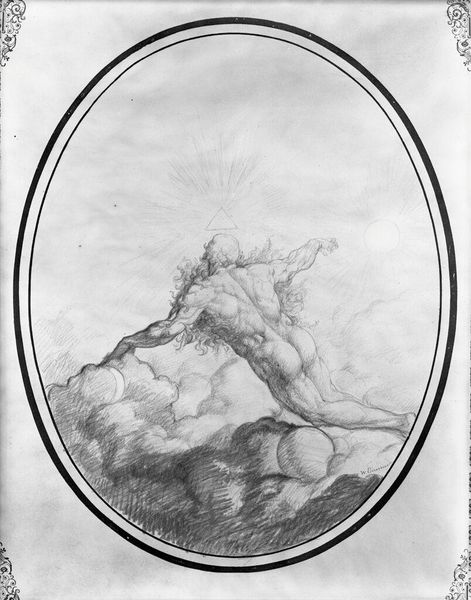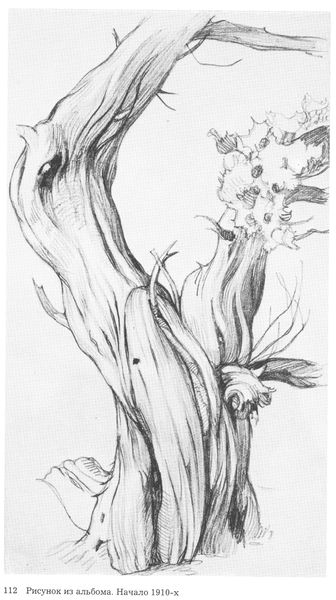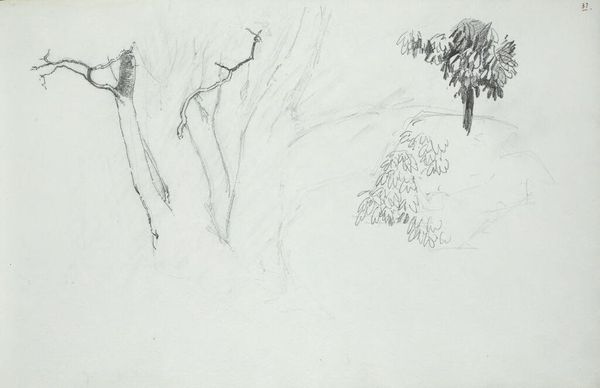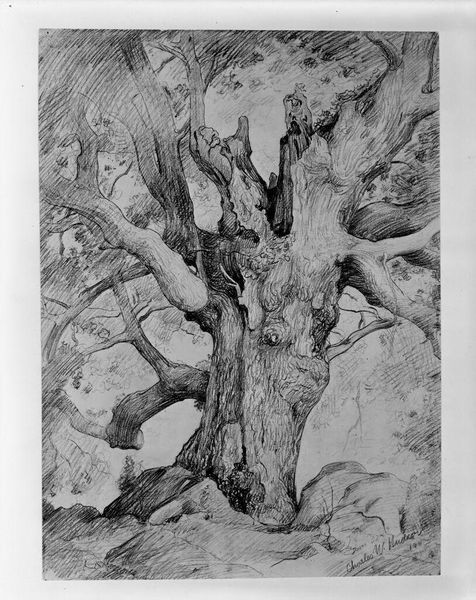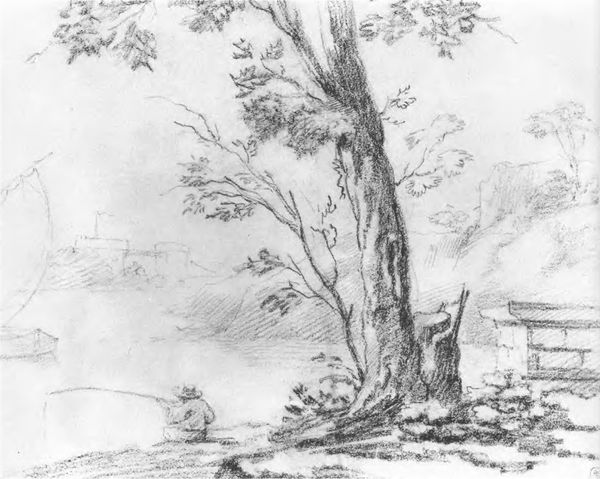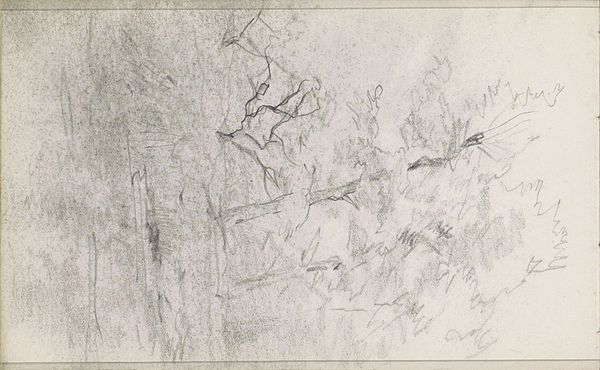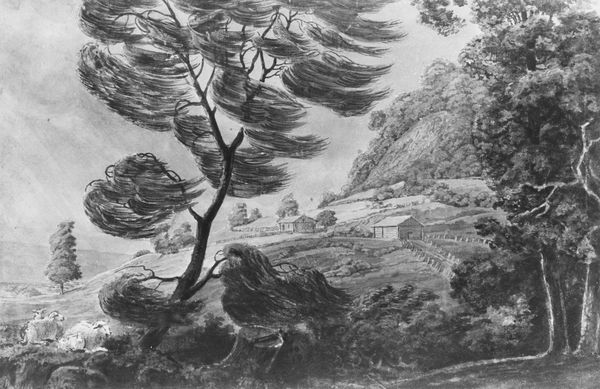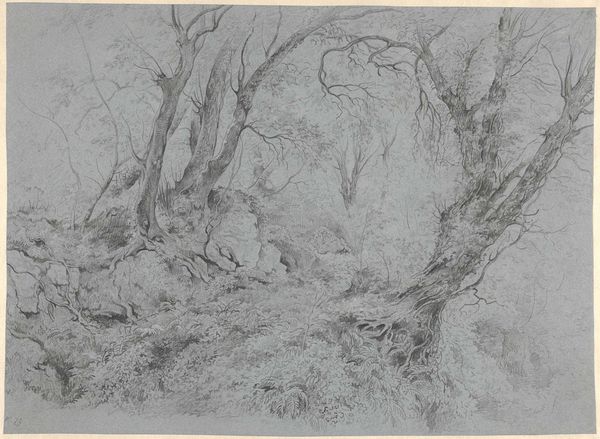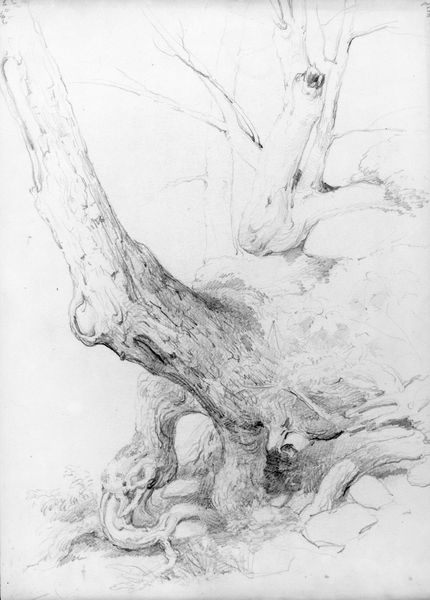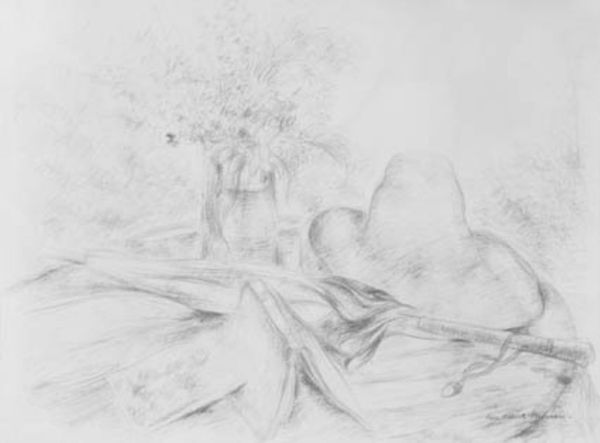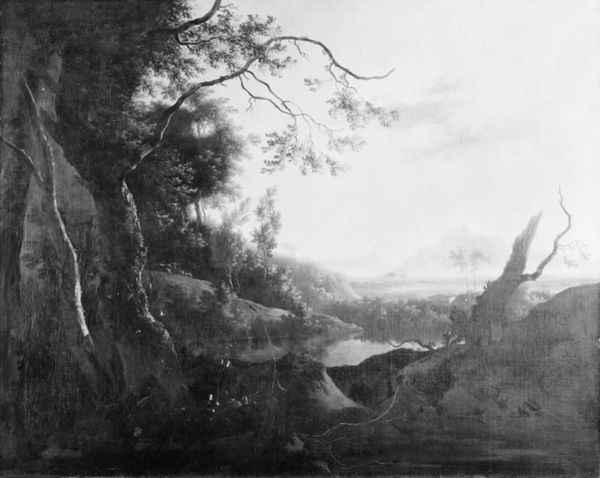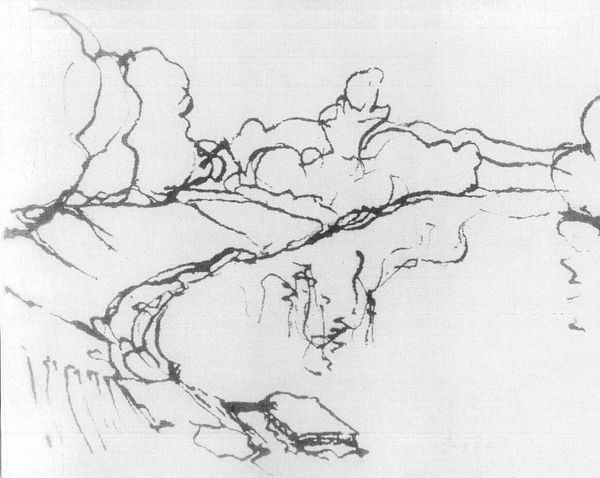
drawing, paper, pencil
#
drawing
#
organic
#
pencil sketch
#
flower
#
charcoal drawing
#
paper
#
pencil drawing
#
fruit
#
plant
#
pencil
#
botany
#
realism
Copyright: Kateryna Bilokur,Fair Use
Curator: Kateryna Bilokur's "Pumpkin Bloom," created around 1950, presents us with a detailed pencil drawing on paper. What's your initial take? Editor: Stark. It’s a muted image, dominated by grays and charcoals. I'm immediately struck by the textures and detail; almost photographic in its realism, while feeling slightly haunting because of the tonality. Curator: Indeed. Bilokur was known for her almost hyperrealistic depictions of flora, especially flowers, which she viewed as the ultimate expression of beauty. Considering her context—rural Ukraine, largely isolated from the avant-garde movements of her time—her commitment to realism can be read as a very specific aesthetic choice, an embrace of her immediate surroundings. The plant as an inexhaustible subject... Editor: Precisely. This was produced during the Soviet era; a moment marked by artistic doctrines championing socialist realism. Looking closely at this "Pumpkin Bloom," and bearing in mind it is simply rendered with pencils and paper, how might the socio-political conditions and material constraints shape the aesthetics and themes found within this artwork? Curator: We see extraordinary command of pencil drawing; her observation and recording of botanical details pushes the medium itself. We are invited to inspect the different parts – from curling vines to ripening buds – which all make labor visible. Even humble materials are elevated via technique. But the work also reminds me how her dedication and her gender led to her outsider status. Her vision, developed independently, both challenged and enriched the established artistic hierarchy. Editor: Yes, it challenges assumptions about the very hierarchy that places "fine art" above rural craft and folk tradition. By portraying the pumpkin vine, Bilokur implicitly comments on agriculture, local economies, and the role of the land in shaping cultural identity. These would resonate deeply with her audience in the Ukrainian countryside, a very specific public and moment for imagery about the soil. Curator: Absolutely, and there is this almost spiritual, life-affirming sense within it. So much information embedded into the careful lines, shapes and delicate shading... a tangible meditation on time and natural production that exists between earth, studio, and society. Editor: It is true! Thank you, I won't look at another still life drawing without considering these relationships of technique and visibility that are often overlooked. Curator: And for me, I am left to think again on artistic commitment given any background—what devotion, under any sociopolitical regime, is able to achieve when constraints drive us beyond them.
Comments
No comments
Be the first to comment and join the conversation on the ultimate creative platform.
